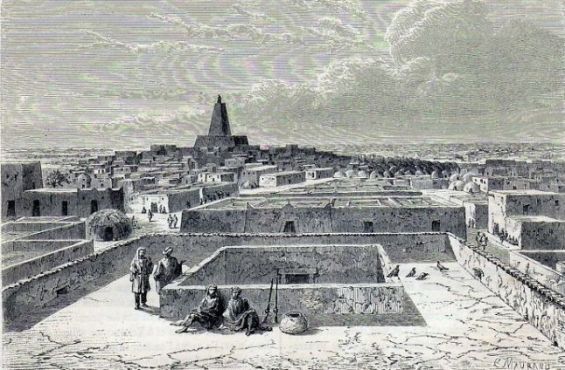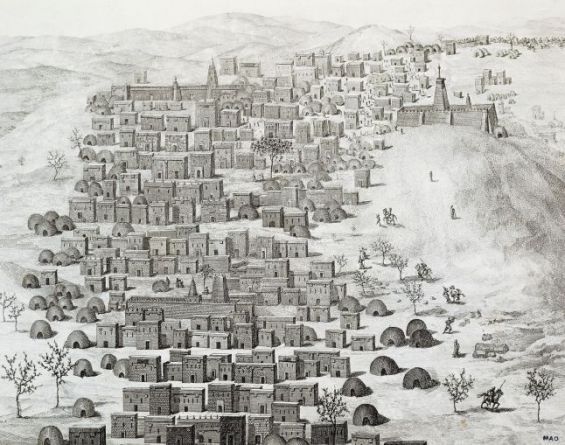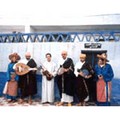The mysterious account of Robert Adams, an American sailor, gained fame in Europe in the 19th century after he claimed that he was enslaved in Morocco and taken to Mali’s ancient city Timbuktu. The young man’s tale was told in detail in a book entitled «The Narrative of Robert Adams» and edited by the British vice-consul in Mogador, Joseph Dupuis.
Adams’ unusual and fantastic tale started when he survived a shipwreck in 1810 in Cape Blanco, a peninsula divided between Mauritania and Morocco. The ship named Charles arrived in Gibraltar before it wrecked on the «western coast of Africa», as reported in Adams' account.
The Charles’ crew was saved but enslaved by «Moors» who took Adams on a long journey across the Sahara.
From Morocco to Timbuktu
According to his account, Adams remained in captivity for three years, during which he was subjected to torture and mistreatment. After being captured by Moors, his masters were killed by «black Africans» and he was taken to Mali.
«The bare outline of his story was too fantastic for some», indicated the book «The Narrative of Robert Adams, A Barbary Captive: A Critical Edition», (Cambridge University Press, Oct 24, 2005).

Indeed, after his masters were murdered, Robert Adams' new enslavers «marched him to Timbuktu», held him there as a «human merchandise for six months, sold him back into Moorish slavery, and he marched back across the Sahara».
Ransomed by the British vice-consul in Mogador
The same book states that Adams was sold again to other masters in southern Morocco before being «ransomed by Dupuis at Mogador». «Dupuis had ransomed an American (…) from slavery among the desert Arabs in 1814, and had made notes of the man’s tale of travel to Timbuktu».
Dupuit kept record of the American man describing his appearance : «The appearance, features, and dress of this man...so perfectly resembled those of an Arab, or rather a Shilluh (Amazigh, ed), his head being shaved and his beard being scanty and black, that I had difficulty at first in believing him to be a Christian».
From Meknes to Cadiz
In his tale, Robert Adams said that after spending months at Dupuis’ abode in Mogador, he was sent to Meknes to meet the Sultan and tell him about his fascinating travel to Timbuktu. According to the critical edition of Adams’ narrative, the American seaman was sent to Meknes, then to Tangier, where he was «placed aboard a ship to Cadiz».
_-_Copy.jpg)
In Cadiz, Robert Adams «was put to work as a groom for more than a year by an English gentleman residing there, before finally making his way via Holyhead (a ship) to London».
In London, Robert Adams fell from grace. The man was roaming the streets before being «accidentally recognized», in October 1815, by a man he met a few months before in Cadiz. The latter was fascinated by the account of Adams and decided to reach the office of the African Company, known also as the Company of Merchants Trading to Africa which published the first version of Adams’ account based on interviews held with him at their London office.
An unusual narrative
«Such a report was too curious not to have attracted the peculiar attention of the Editor at all times, but the interest of the story was much heightened at that moment», wrote the Secretary to the Committee of the company Simon Cock who interviewed Adams.
Cock interviewed Adams and contacted Dupuis to edit the story before assembling his answers into the Narrative published in 1816.

Although his account contained details about Morocco, Timbuktu and the sufferings of white slaves in Africa, the work was criticized by the European society which had doubts about the stories told by the American seaman.
When speaking to Dupuis, Cock realized that Robert Adams was not the sailor’s real name and that he was known in Morocco by the name of Benjamin Rose. That was not the only thing that discredited Adams’ account.
The president of the Royal Society Joseph Banks and a fellow of the body, namely John Barrow, «had their doubts» after listening to Robert Adams.
«Cock had to admit in his introduction that Adams ‘had the misfortune...to excite some doubts in their minds by his account of Timbuctoo and by his mistakes on some subjects of natural history», the same source concluded.




 chargement...
chargement...












